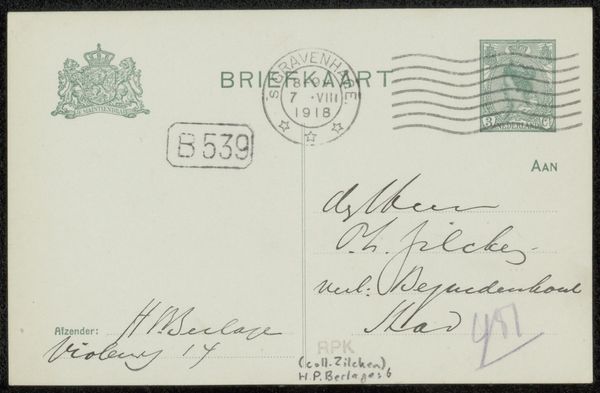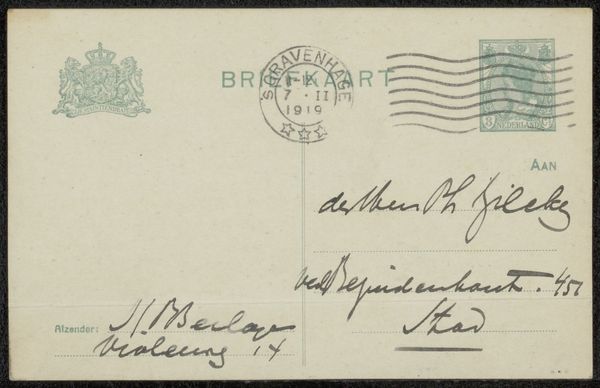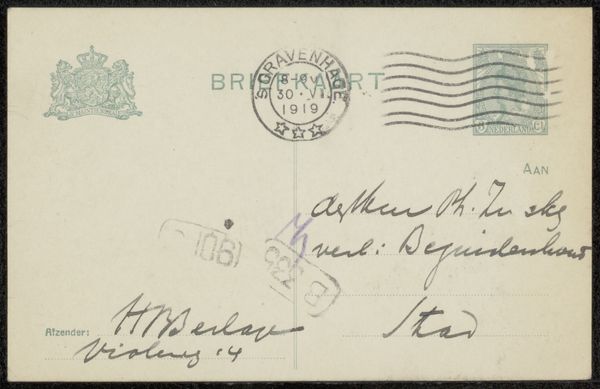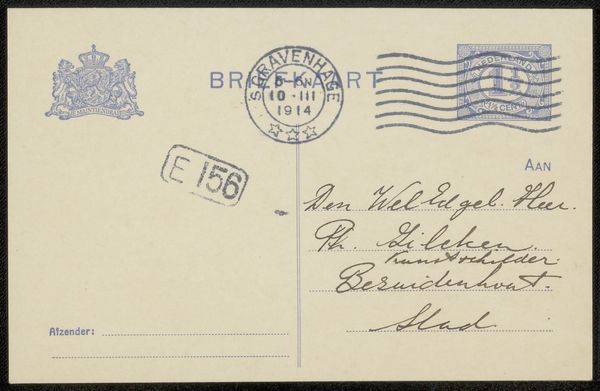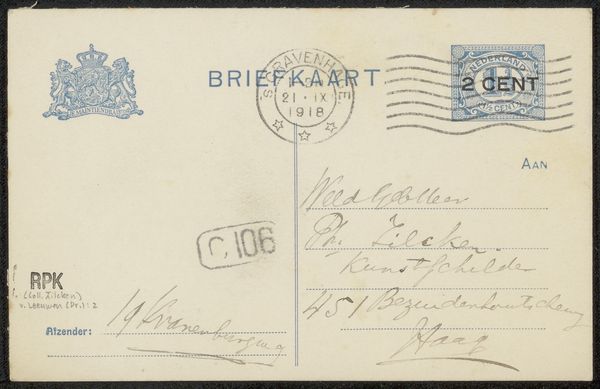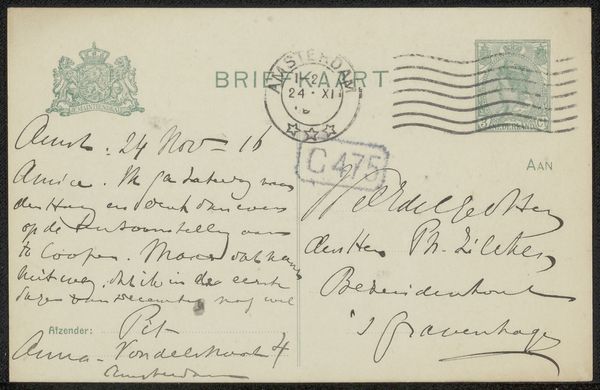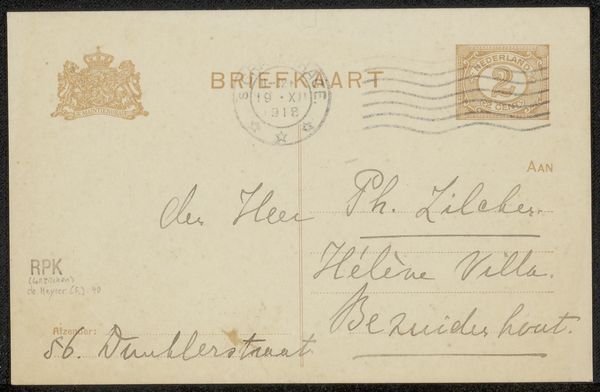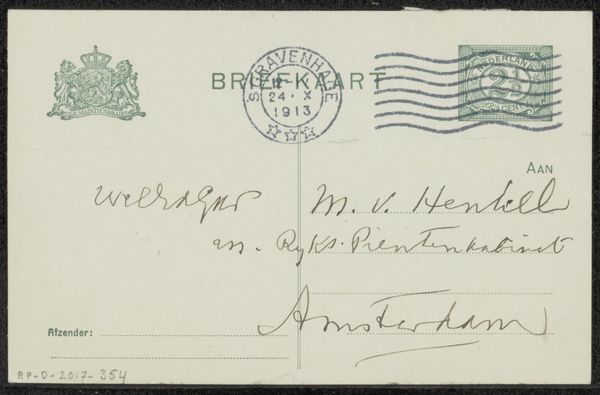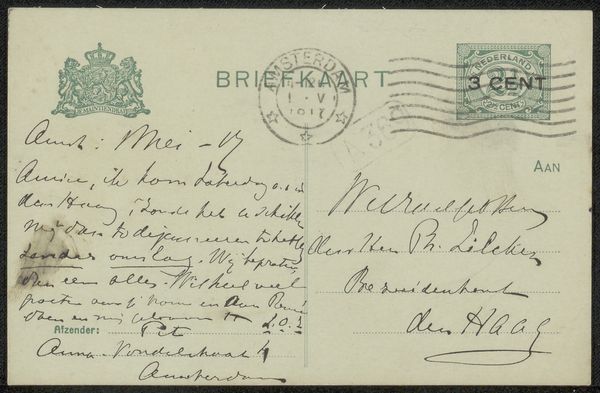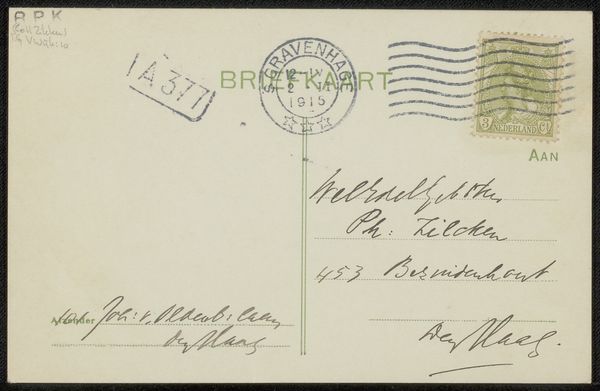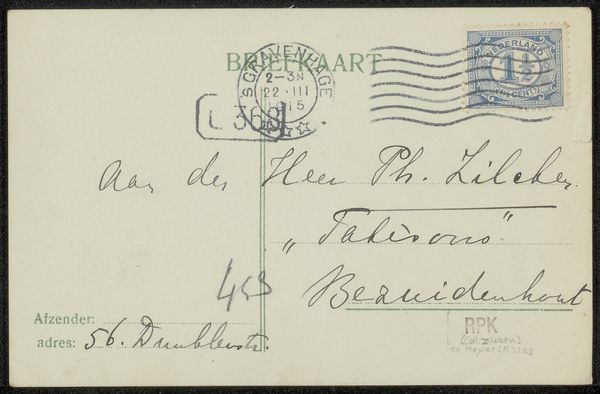
drawing, paper, ink
#
drawing
#
paper
#
ink
#
calligraphy
Copyright: Rijks Museum: Open Domain
Curator: This work is entitled "Briefkaart aan Philip Zilcken" which roughly translates to "Postcard to Philip Zilcken," and we believe it dates from around 1918. Editor: There's something incredibly intimate about this; you know, seeing handwriting always feels personal. Even if it's just names and addresses, the loops and flourishes speak to a human hand and intention. It really anchors this to a time and place. Curator: Precisely! Think about the context of 1918—a world embroiled in the final throes of World War I. The simple act of sending a postcard transcends a mere message. The very material, its journey through postal systems becomes freighted with ideas of longing, perhaps, but more universally with human connection and social structures of the time. What are the labour conditions that enable communication? Editor: You know, you're right. There's a tangible cost embedded. Look at the stamp itself, the ink, the paper… and the physical labor of postal workers processing these, during a global event of catastrophic material losses, it reminds you that everyday actions continue no matter what. There’s a certain resilience present here, a persistence in daily functions of wartime that belies some of the more abstract arguments that frame political debates about war. Curator: Exactly! I also consider the intersectional implications, who had access to the means of communication? Gender roles impacted how women stayed connected to family who went off to war; did class afford other individuals privileged or limited pathways of communication during this crisis? This seemingly small piece raises big questions about societal relationships. The handwriting also lends a distinct voice, hinting toward a dialogue—between sender and receiver within the network of interpersonal, intimate communication. Editor: The material traces are interesting too - ink blots, the fading colour of the postmark, the various stamps layered, these function almost like the unintentional gestures found in other visual media. A physical signifier of labor’s presence! You realize this postcard existed in time, space, touched by many before its present context and exhibition. Curator: Absolutely, this artifact gives material form to histories, the human touch so vital within that production and reception network becomes almost unbearably powerful. Editor: Ultimately, the quiet presence of an otherwise ordinary piece provides a profound entry point into the texture of daily life during turbulent circumstances.
Comments
No comments
Be the first to comment and join the conversation on the ultimate creative platform.
